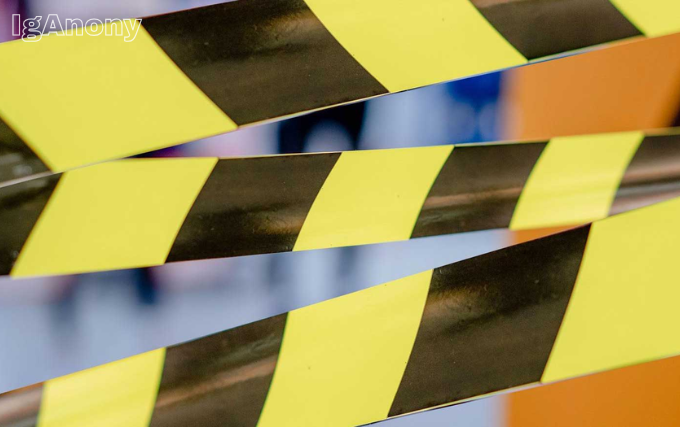In the realm of occupational health and safety, proactive measures are paramount to ensuring the wellbeing of staff, visitors, and the general public. Among the various tools utilised to uphold safety standards, one that stands out for its simplicity and efficacy is Safety Tape. This article will explore the critical role that safety tape plays in accident prevention, complementary safety measures like safety signs and bollards, and how they together create safer environments.
The Significance of Safety Tape in Accident Prevention
Often overlooked due to its humble appearance, safety tape holds a significant position in the hierarchy of safety precautions. Its vibrant colours and distinctive patterns serve as a visual cue, delineating areas where caution is required. Safety tape can demarcate hazardous zones, temporary obstacles, or areas under maintenance, communicating crucial information in an instant and thus preventing potential accidents.
One of the most immediate benefits of employing safety tape is its visibility. Flooded with fluorescent hues or incorporating reflective surfaces, safety tape catches the eye, prompting an instinctive alertness. It is a universal language of danger, understandable to anyone, regardless of language barriers. The result is a heightened awareness among individuals, leading to careful navigation and reduced risk of injury.
Integration with Other Safety Measures
While safety tape is a robust deterrent on its own, its effectiveness is heightened when used in conjunction with other safety measures. Among these is the implementation of Safety Signs. These signs provide explicit information about potential dangers, rules, and instructions, reinforcing the message conveyed by safety tape. Anchoring visual warnings with written or graphic signs ensures that the message is unmistakable.
In environments with vehicular traffic, such as warehouses, parking lots, or active roadworks, the use of safety tape in tandem with Bollards further enhances protective measures. Bollards serve as physical barriers, guiding traffic, protecting pedestrians, and demarcating secure areas. When augmented with safety tape, they are more visible, preventing collisions and directing movement efficiently.
Applications of Safety Tape
The applications for safety tape are abundant across various industries. In construction, it is used to outline exclusion zones around heavy machinery or open excavations. In manufacturing, safety tape can indicate walkways, separating them from areas with forklift traffic. In the public domain, it can mark temporary hazards, such as a wet floor, a step, or low headroom, effectively reducing the potential for slips, trips, and falls.
Considerations for Effective Use
To optimise the efficacy of safety tape, it is crucial to consider factors such as the choice of colour. Certain colours are associated with specific warnings; for example, red often denotes danger or prohibition, while yellow suggests caution. The placement is also important; the tape needs to be situated where it is most visible and where it can best fulfil its role of demarcation.
Furthermore, the durability of the safety tape is critical. In high-traffic areas or sites exposed to harsh weather, the tape must withstand wear and tear without losing its visibility. Regular inspections and maintenance are needed to ensure that the safety tape continues to serve its preventive purpose effectively.
Impact on Health and Safety Compliance
The incorporation of safety tape into an organisation’s health and safety strategy is also indicative of its commitment to compliance. Regulatory bodies often mandate specific safety standards, and the use of visual aids like safety tape is frequently part of these requirements. Organisations that invest in safety tape, therefore, demonstrate due diligence in adhering to legal responsibilities and protecting all parties on their premises.
Creating a Culture of Safety
Beyond compliance, the use of safety tape reflects the establishment of a culture of safety within a company. Encouraging staff to be mindful of their environment and to take the necessary precautions fosters a shared sense of responsibility for safety. The visual prominence of the tape reminds everyone in the vicinity that safety is a priority and that risks have been considered and mitigated.
Conclusion
The significance of safety tape as an accident prevention tool cannot be understated. Its ability to visually communicate danger, isolate hazardous areas, and work in harmony with other safety devices like safety signs and bollards, form an intricate mesh of preventative strategies. Investing in quality safety tape and integrating it within a comprehensive safety plan is a testament to an organisation’s dedication to creating safe and secure environments.
In sum, the ubiquitous lines of safety tape are much more than simple adhesives; they are the quiet guardians of industrial landscapes, silently dictating the boundaries between safety and hazard. Their silent stripes paint a story of caution, guiding us away from potential harm and towards a more secure and well-organised space.
For businesses and organisations seeking to enhance their safety measures, embracing the use of safety tape is not just a regulatory compliance checkbox. It is a fundamental step in safeguarding one’s environment, a tool that can be the difference between an uneventful day at work and an avoidable accident. Safety tape is an essential, yet understated champion of occupational safety.







